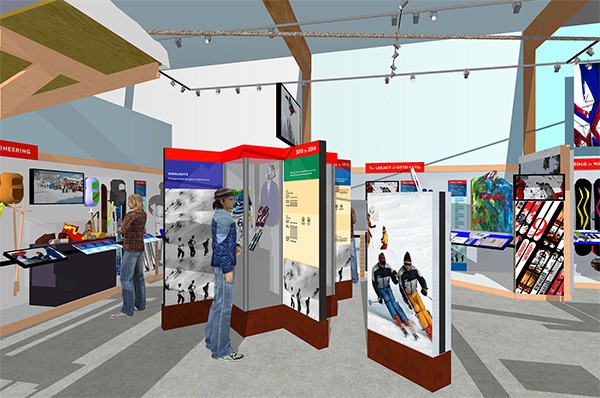The late Islander Irv Pratt always wanted to tell the stories of Seattle’s snow sports, and his dream of opening a Washington State Ski and Snowboard Museum (WSSSM) will come true next spring.
Islander Dave Moffett, the former president of Snoqualmie Summit’s four ski areas, has been spearheading the project since Pratt’s death in 2013.
“We think it’s a great sport and that more people ought to do it. Snoqualmie Pass is such a busy pass, and it’s the largest ski area in the state by far,” Moffett said. “It only takes one family to go there (to the museum) and have a little kid say, I want to be an Olympian.”
The museum will honor Washington’s ski and snowboard legends and even feature some Olympic memorabilia to both educate visitors and inspire future participation in Washington’s ski and snowboard opportunities.
One of the World Cup trophies of alpine skier Phil Mahre, from Yakima, will be on display, as well as Seattle native Debbie Armstrong’s gold medal from the giant slalom at the 1984 Winter Olympics in Sarajevo, Yugoslavia, and various items from 2010 and 2014 Olympian Patrick Deneen. Deenen grew up near Snoqualmie Pass, where many famous athletes learned to ski.
“Washington isn’t like Utah or Colorado with all the destination areas. We’re a teaching place,” Moffett said. “(Skiing) is getting to be a more expensive sport, and that’s too bad. We’re pretty sure Snoqualmie has taught more people how to ski than any other ski area in the country. Certainly the night ski area is by far the largest.”
The main goal is education, and showing Washington’s snow sports history to visitors in the most interactive, visually appealing way possible.
“We want to open it up to more people to enjoy skiing,” Moffett said. “It’s going to be high quality. It’s not going to be like somebody just showed up there and threw in their old ski equipment.”
The museum recently received IRS approval as a 501(c) 3 non-profit, and the design is almost complete. It will be a “story-telling” museum that uses technology, similar to Seattle’s Museum of History & Industry on South Lake Union, Experience Music Project and Gates Visitor Center.
Exhibits include “Today’s Washington Snow Sport Venues,” which will show a map and updated winter ski conditions on a live feed and “Outdoors for All Foundation” with information on the Seattle-based nonprofit that offers programs for people with disabilities at several Western Washington ski areas.
“Modern Ski Manufacturers & Retailers” will showcase Washington snow sports companies including K2, Sturtevants and REI. Other exhibits include “Ski Mountaineering” and “Celebrate the Rope Tow.” A fully functioning rope tow, like one of the early ones designed by Moffett’s father, Webb Moffett, will be displayed overhead of museum visitors.
“In 1937, they took a motor out of a car, and used it to propel the rope tow. Now we’ve got a little electric motor, but everything else is the same,” Moffett said.
Pratt founded the Ancient Skiers in 1983, and established the Northwest Ski Hall of Fame in 1987 with the induction of five original members. There are now 74.
But Pratt always envisioned a museum. In the late 1980s and early ‘90s, the U. S. Forest Service building on Snoqualmie Pass served this purpose, and more recently some displays were staged in the lodge at Crystal Mountain, Moffett said.
Various efforts “have lacked funding and a suitable location to bring the original vision of Irv Pratt and the Ancient Skiers to fruition,” according to a WSSSM update.
But serendipity struck when Moffett learned of the new development planned by The Pass, LLS, which will be across the road from The Summit Inn at Snoqualmie Pass. The museum will lease 1,200 square feet of museum space plus 400 square feet of mezzanine from The Pass, and be housed between a restaurant and a brewpub.
Total annual operating expenses are estimated to be $60,000-$75,000. The financing plan is to raise $600,000 – over 80 percent of which is currently raised or committed, according to the update.
No admission charges are planned for visitors.
For more information, go to http://www.wsssm.org.




